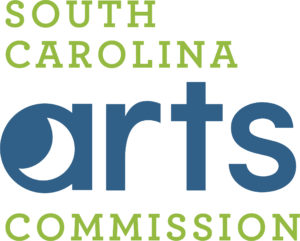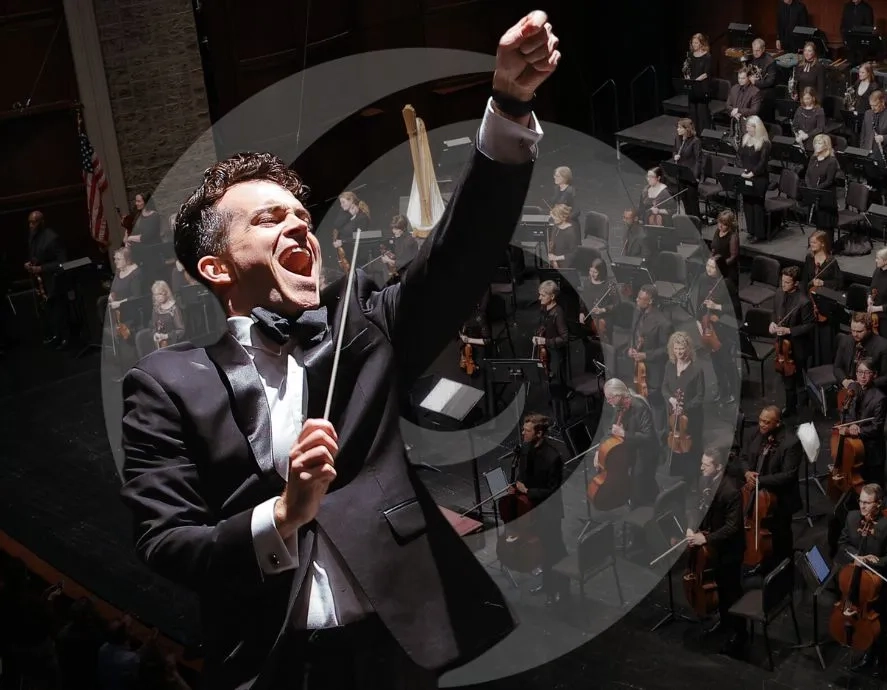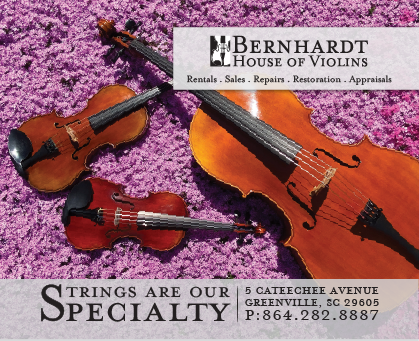
DVORAK'S "NEW WORLD"
Saturday, February 26, 2022 at 8:00 p.m.
Sunday, February 27, 2022 at 3:00 p.m.
Peace Concert Hall
Edvard Tchivzhel, Music Director & Conductor
Olga Kern, piano
RACHMANINOFF (1873-1943)
Piano Concerto No. 1
I. Vivace
II. Andante
III. Allegro vivace
intermission
DVORÁK (1841-1904)
Symphony No. 9 ("From the New World")
I. Adagio - Allegro molto
II. Largo
III. Molto vivace
IV. Allegro con fuoco
![]()
Funded in part by a grant from the Metropolitan Arts Council, which receives funding from the City of Greenville, SEW Eurodrive, BMW Manufacturing Company, LLC, Michelin North America, Inc., and the South Carolina Arts Commission with support from the National Endowment for the Arts.
This organization is funded in part by the
South Carolina Arts Commissionwhich receives support
from the National Endowment for the Arts.
Dvorak’s ‘New World’
Program Notes by Paul Hyde
--------------------------------------------------------------------------
Piano Concerto No. 1
Sergei Rachmaninoff (1873-1943)
Rachmaninoff’s First Piano Concerto is the work of an 18-year-old who hopes to make a mark on the world. It’s a big, Romantic concerto with heartfelt melodies and pianistic pyrotechnics that make considerable demands on a virtuoso’s technique. In short, it’s unmistakably Rachmaninoff.
The Russian composer possessed great affection but also had some doubts about this early work, so he revised it 1917 — more than two decades after it was initially composed. By that time, Rachmaninoff had written many of the works for which he is best known, including the second and third piano concertos and two of his symphonies.
“I have rewritten my First Concerto,” Rachmaninoff wrote to a friend. “It is really good now. All the youthful freshness is there, and yet it plays itself so much more easily.”
The First Concerto, then, reflects both a teenaged Rachmaninoff who was already in possession of a strongly defined compositional style, and a mature, worldly, and experienced creative artist.
It is the revised concerto that is most often heard in the concert hall, and it’s this version that will be performed by pianist Olga Kern and the Greenville Symphony Orchestra.
Rachmaninoff, as has often been noted, was one of the last great Romantic composers, largely resisting the stylistic innovations favored by, for instance, his countryman Igor Stravinsky.
The bold opening of the concerto bespeaks a young composer demanding to be heard. An urgent two-measure fanfare in horns, clarinets and bassoon sparks an assertive entrance from the piano, which, erupting high in the treble, lunges down the keyboard in double octaves and chords. After a cadenza-like flourish, the strings intone the lyric main theme. The solo pianist takes up the melody, extensively embellishing it. Rachmaninoff develops this theme and others in brilliant fashion.
The show movement’s nocturnal atmosphere, initiated by a horn solo, spotlights a long-lined, introspective melody that seems almost improvisational.
The finale is characteristically Rachmaninoff, with fiery, syncopated rhythms and dazzling, breathtaking piano work.
Symphony No. 9, “From the New World”
Antonin Dvorak (1841-1904)
The symphony is the Czech composer’s tribute to America. Dvorak lived in the United States for three years as the head of New York’s National Conservatory of Music. While in this country, he was particularly inspired by Native American music, folk music and spirituals. He quipped, “Everyone who has a nose must smell America in this symphony.”
The work’s expansiveness, sentimentality and rugged confidence certainly seem to reflect an idealized America. Dvorak was also influenced by American literature. Original sketches for the famous second movement were inspired by the scene of Minnehaha’s forest funeral in “The Famine” from Henry Wadsworth Longfellow’s The Song of Hiawatha.
Music commentators have noted, however, that the music also recalls the Czech folk melodies and rhythms that inform Dvorak’s other symphonies. As one critic noted, the symphony may be best described as “a hymn to the folk spirit of two countries: America and Czechoslovakia.”
The symphony, cast in the traditional four movements, has become the composer’s most often-performed work.
- Following a slow introduction, two horns present the main theme of the movement over shimming strings. This theme, soon taken up by the trombones, will dominate the first movement and also become a unifying presence — a “motto theme” — throughout the symphony. Flutes and oboes introduce a more lyrical motif. Later, a solo flute intones a melody that many have seen as a reference to “Swing Low, Sweet Chariot.” All three themes are developed extensively, and the movement ends in a surge of affirmation.
- After a solemn introduction, a solo English horn sings a serene melody that is one the most familiar and beautiful in classical music. (The songful theme has often been arranged for choir, perhaps most memorably in the spiritual “Goin’ Home.”) A series of variations follows, with the tranquility interrupted briefly by a forceful restatement of the motto theme. But the movement closes in wistful serenity.
- Dvorak said the third movement “was suggested by the scene at the feast in Hiawatha where the Native Americans dance, and is also an essay I made in the direction of importing the local color of the Native American character to music.” This is fiery, highly syncopated music, with two graceful interludes.
- The powerful finale is built on an assertive theme first proclaimed by trumpets. Dvorak introduces contrasting lyrical melodies and brings back themes from earlier movements. At the conclusion, Dvorak combines the movement’s forceful opening material with the motto theme in a blaze of brassy brilliance — before concluding the symphony with a thundering coda.
Paul Hyde, a longtime Upstate journalist, teaches English at Tri-County Technical College and Lander University.
THE SOLDIER'S TALE
Friday, March 4, 2022 at 8:00 p.m.
Saturday, March 5, 2022 at 8:00 p.m.
Sunday, March 6 at 3:00 p.m.
Chamber - Gunter Theatre
Edvard Tchivzhel, conductor
David Bean, narrator
International Ballet of Greenville
International Ballet appearance sponsored by Greta and Graham Somerville
STRAVINSKY "The Soldier's Tale"
REVOLUTION: THE MUSIC OF THE BEATLES
A Symphonic Experience
Thursday, March 10 at 7:30 pm
Pops Special Event- Peace Concert Hall
William Waldrop leads the GSO and guest singers in the greatest hits of the Fab Four. Featuring orchestral arrangements by Grammy-winner Jeff Tyzik created from the original Abbey Road recordings and vintage images from the Beatles official fan magazine projected above the stage.
The Greenville Symphony Orchestra thanks Community Journals and Salem Media Group (94.5 FM "The Answer," 103.3 FM & 95.9 FM "The Earth" and 96.9 FM "Rejoice") for providing promotional support.

Concert Hall Series
Saturday performances at 7:30 pm
Sunday at 3:00 pm
Opening Night: Beethoven’s Ninth
October 5 & 6
Grieg’s Piano Concerto
November 23 & 24
Tchivzhel Conducts Tchaik 4
January 25 & 26
Duke Ellington’s The River
March 1 & 2
Jacqueline Tso plays
Bruch’s Scottish Fantasy
April 5 & 6
Beethoven and Brazil
May 10 & 11
Gunter Theatre Series
Performance start times vary
Peter and the Wolf
November 9 & 10
The Marriage of Figaro
February 15 & 16
Movers, Shakers, and Noise-Makers
March 22 & 23
Bach-Inspired with Violist Kathryn Dey
May 24 & 25
Special Events
Holiday at Peace
Peace Concert Hall
December 6 at 7:00 pm
December 7 at 1:00 & 7:00 pm
December 8 at 2:00 pm
Harry Potter and the Prisoner of Azkaban™ in concert
Peace Concert Hall
January 11 at 1:00 pm and 7:00 pm
January 12 at 2:00 pm
Star Wars: The Empire Strikes Back in Concert
May 4 at 7:00 pm
Bon Secours Wellness Arena
Music at Hotel Hartness
A luxe chamber music experience in a beautiful space.
Performances at 7:00 pm
Dracula! with Special Guest Dacre Stoker
October 23
Musical Landscapes
April 23
Music in the Gray Loft
Enjoy lunch or wine with a friendly, casual chamber music experience.
Performances at 12:00 and 5:30 pm
Dracula! with Special Guest Dacre Stoker
October 24
Musical Landscapes
April 24
Details and tickets available at greenvillesymphony.org









